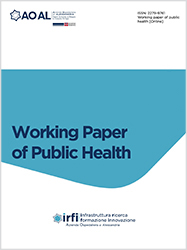CAR-T therapy: the role of the hematopoietic stem cell processing laboratory

All claims expressed in this article are solely those of the authors and do not necessarily represent those of their affiliated organizations, or those of the publisher, the editors and the reviewers. Any product that may be evaluated in this article or claim that may be made by its manufacturer is not guaranteed or endorsed by the publisher.
Objectives: Purpose of this paper is to review all the phases that involved, for the first time, the SC of Hematology and the SC of Transfusion Medicine, specifically, the CSE Processing laboratory, in implementing an innovative operative protocol of gene immunotherapy due to the inclusion of the first patient, affected by diffuse large B-cell lymphoma (DLBCL), stage IV, into the CAR-T therapeutic program. The program took place within the SS Antonio e Biagio e Cesare Arrigo Hospital of Alessandria.
Methods: Firstly, lymphocytes are taken from the patient through a technique called lymphocytoapheresis and inserted into a blood bag. The blood bag is sent to the CSE Processing laboratory, where, after sampling, the following steps are carried out: cell manipulation, possible cryopreservation of the product and subsequent dispatch to specialized production centers, called: Cell Factory. In this laboratory, lymphocytes will be genetically manipulated to be able to express the CAR receptor and co-stimulating factors and, finally, expanded. After 4 weeks, the engineered lymphocytes will return as drug to the CSE Processing laboratory to be reinfused to the patient.
Results: At the end of the operative procedure a report is compiled. The report is issued by the laboratory and contains all the information of interest to the clinician.
Conclusions: The purpose of my annual experience as a graduate student was to describe the role of the CSE Processing laboratory within the drug production chain. Being experimental and extremely innovative, T-cell-based gene therapy cannot be considered a routine practice. The centers authorized to administer the CAR-T are identified by the Regions and must possess specific organizational and infrastructural requirements. Even the manufacturers of CAR-T therapies have a qualification path that involves inspection by the company's monitors and a final audit. The Processing laboratory, together with the Apheretic collection laboratory, Pharmacy and Hematology, obtained the qualification of "European site Qualified for KYMRIAH® (tisagenlecleucel) and YESCARTA® (axicabtagene ciloleucel)" in 2021.
PAGEPress has chosen to apply the Creative Commons Attribution NonCommercial 4.0 International License (CC BY-NC 4.0) to all manuscripts to be published.

 https://doi.org/10.4081/wpph.2021.9451
https://doi.org/10.4081/wpph.2021.9451




